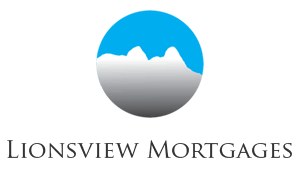Prepayment is one of the best investments
Jonathan Chevreau
Financial Post
After the taxman gets through with your paycheque, what should you do with any money still burning a hole in your pocket?
Instead of throwing more money into a stock market that will be lucky to tread water the next few months, why not consider a guaranteed winner? Debt repayment.
Because mortgage interest is not tax deductible in Canada (unlike the United States), there’s no better investment than paying down the mortgage on your home.
Consider that a $150,000 mortgage will end up costing you more than twice that amount, even at today’s relatively low interest rates, if you did what the banks want you to do and spread your mortgage payments out over 25 years.
The best time to pay down your mortgage is early in the amortization schedule. Remember that in the first five years of a normal mortgage, most of your payments are going to pay interest, not the principal. Unless you accelerate payments or increase their level to a point that principal payments are at least as high as the interest, you’re going to be a slave to your mortgage.
When my wife and I had a $170,000 mortgage in 1989, we took advantage of the 10% annual prepayment privilege. Coming up with $17,000 wasn’t easy and it seemed like pouring money down the drain. After all, there was nothing tangible to show for it.
But three or four years of such payments did wonders for knocking down the principal. Without it, that $170,000 would have fallen to just $168,000 or so a year later. With the paydown, it dropped to $151,000 after one year, $132,000 the next, etc. We kept our old cars going, and we didn’t go to restaurants much but it was a great moment when the principal dipped below $100,000.
In these days of maximum consumption, home equity loans and reverse mortgages, such a strategy admittedly lacks drama.
You have to buck the pressure from advertisers to consume, banks and credit card companies to stay in debt and the brokers and fund companies to play the market. You see, none of these entities benefits when you pay off your debts, only you do.
But just about any financial advisor who has the client’s best interests at heart will counsel debt repayment. Noted financial authors also agree. David Chilton, author of The Wealthy Barber, believes debt repayment is one of the best investments out there.
In another personal finance book, The Money Adviser, Bruce Cohen says of mortgages that “prepayment is the best way to save money on your mortgage — and one of the best investments you can make. Regular payments chip away at your mortgage. Prepayments chop.”
Even if you can’t afford the 10% annual paydown in the early years, there are some manageable things you can do that will provide amazing returns.
Mr. Cohen, a former Financial Post columnist and now a freelance financial writer based in Udora, Ont., describes a strategy he calls “Bruce’s 4-step mortgage paydown tango.”
He assumes a $100,000 mortgage amortized over 25 years and an 8% interest rate the first five-year term, followed by a 7% rate at renewal. Total interest over the 25-year payback would normally be $115,907. In other words, the $100,000 you borrowed will require paying back $215,907 in combined principal and interest. Ouch!
In step one of the paydown-tango, when it comes time to renew after five years, you don’t cut your payment in line with the lower rate but keep the payment where it was. The extra $54.40 a month will reduce your total amortization to 22.2 years and save you $12,418 in interest, Mr. Cohen writes. His calculations were done on the MORGIJ2 amortization software package produced by Burlington, Ont.-based Different Products Ltd., which can be found on the Internet at www.morgi2.com or www.amortization.com.
In step two, you accelerate paydown by moving from monthly payments to a biweekly schedule. The biweekly payment is initially $381.61. Keeping it that way even after five years means your amortization schedule falls to just 18.6 years. Now your interest savings has grown to $31,653.
In step three, you bump up your payments in line with growth in your income. Remember that any increase in your regular payments goes directly to paying down principal. Now your mortgage slavery has been cut to 15 years and total interest savings have ballooned to $42,666.
In step four, you contribute to your registered retirement savings plan and use the tax refund to pay down the mortgage further. Assuming you applied a $3,500 refund in year two, doing this only once would shave the amortization period to 14.9 years and knock off $5,836 in interest.
Do it every year and the amortization period drops to 10.7 years. Total interest costs after the four steps would be $49,312 instead of the $115,907 you would have paid out doing it the bank’s way.
Mr. Cohen cautions that because mortgages are the cheapest loans around, you should first eliminate car loans, credit card debt and any other debt with a higher interest rate than your mortgage.
